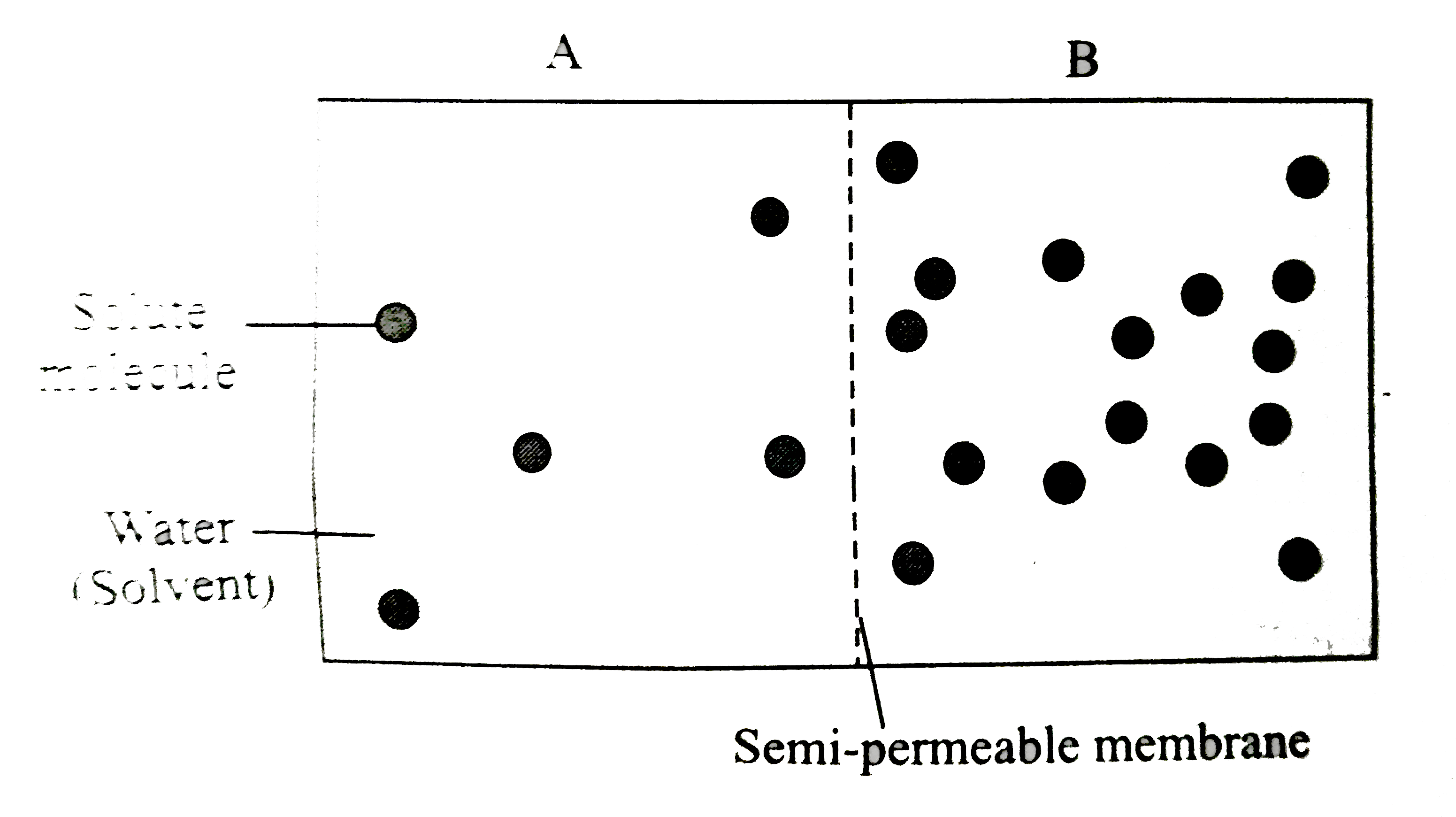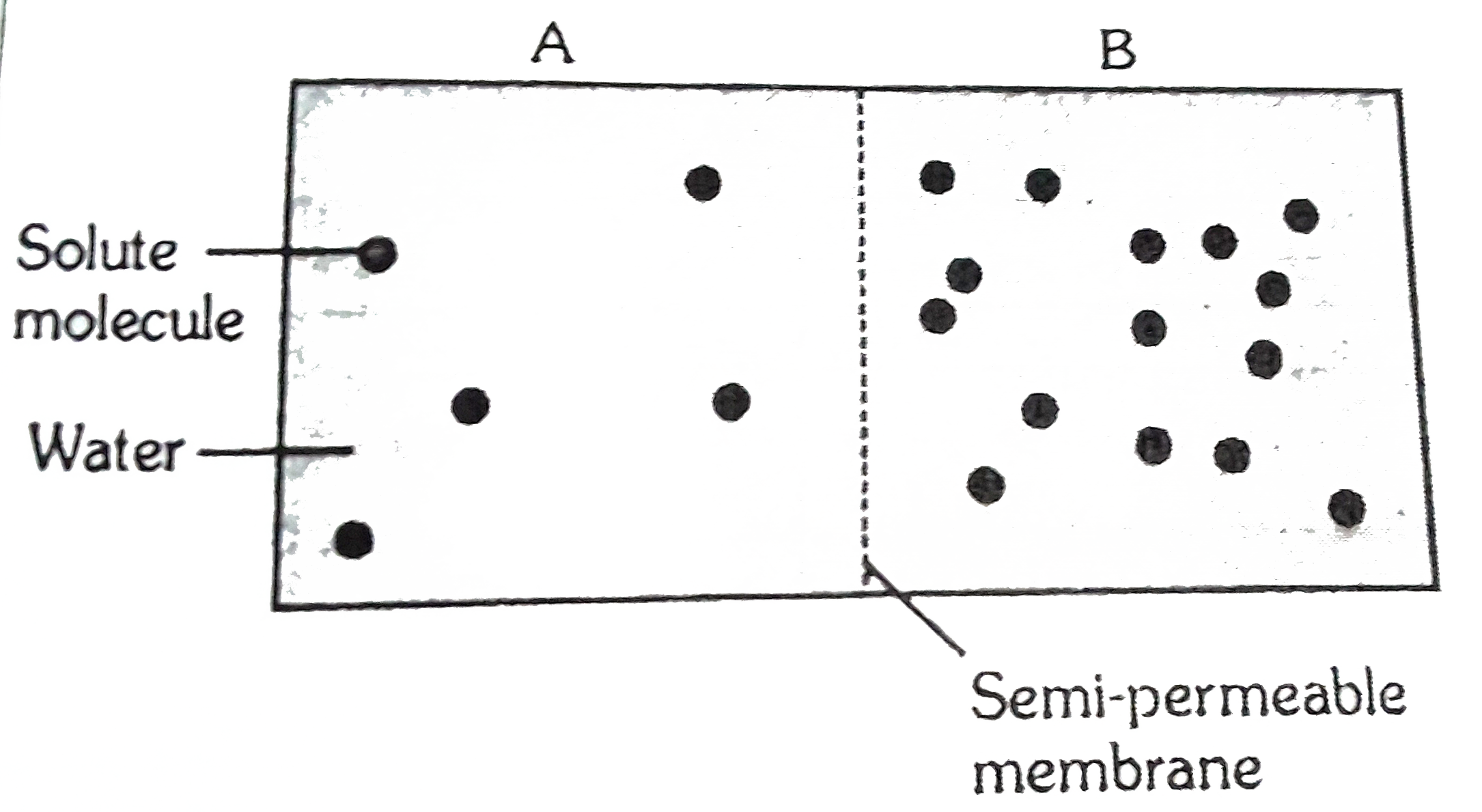If in an osmotic system, one chamber (A) has Ψw−2000KPa while the other (B) has -1000 KPa, which chamber has dilute solution ?
Chamber A
Chamber B.
Both chambers have equal concentration.
Data insufficient
The correct Answer is:B
To determine which chamber has a dilute solution based on the given water potentials, we can follow these steps:
1. Understand Water Potential (Ψw):
Water potential (Ψw) is a measure of the potential energy of water in a system. It indicates how much water can move freely. The more negative the water potential, the less free energy water has, which typically correlates with a higher concentration of solutes.
2. Identify the Water Potentials:
- Chamber A has Ψw = -2000 kPa
- Chamber B has Ψw = -1000 kPa
3. Compare the Water Potentials:
The water potential in Chamber A (-2000 kPa) is more negative than in Chamber B (-1000 kPa). This indicates that Chamber A has a higher concentration of solutes compared to Chamber B.
4. Determine the Concentration of Solutions:
In general, a solution with a higher concentration of solutes will have a more negative water potential. Therefore, since Chamber A has a more negative water potential, it indicates that Chamber A is more concentrated.
5. Conclusion:
Since Chamber B has a less negative water potential (-1000 kPa), it indicates that Chamber B has a lower concentration of solutes and is therefore the dilute solution.
Final Answer:
Chamber B has the dilute solution.
---
Water potential (Ψw) is a measure of the potential energy of water in a system. It indicates how much water can move freely. The more negative the water potential, the less free energy water has, which typically correlates with a higher concentration of solutes.
- Chamber A has Ψw = -2000 kPa
- Chamber B has Ψw = -1000 kPa
The water potential in Chamber A (-2000 kPa) is more negative than in Chamber B (-1000 kPa). This indicates that Chamber A has a higher concentration of solutes compared to Chamber B.
In general, a solution with a higher concentration of solutes will have a more negative water potential. Therefore, since Chamber A has a more negative water potential, it indicates that Chamber A is more concentrated.
Since Chamber B has a less negative water potential (-1000 kPa), it indicates that Chamber B has a lower concentration of solutes and is therefore the dilute solution.
Chamber B has the dilute solution.
Topper's Solved these Questions
Similar Questions
If one chamber has a Ψ of –2000 kPa, and the other - 1000 kPa, which is the chamber that has the higherΨ
View SolutionStudy the given figure in which two chambers A and B, containing solutions are separated by a semipermeable membrane :
If one chamber has Psi of - 2000 kPa and the other-1000 k Pa, which is the chamber that has higher Psi?

View Solution
Knowledge Check
The solution A has a higher osmotic pressure than the solution B :
ASolution A is hypertonic to solution B.BSolution A is hypotonic to solution B.CSolution A is isotonic to solution B.DSolution B is hypertonic to solution AWhich one among the following has a three chambered heart?
AFrogBBatCHumanDMouseReconise the figure and find out the correct statement.

(i) Solution of which chamber has a lower water potential?
(ii) Solution of which chamber has a lower solute potentia?
(iii) In which direction osmosis occurs?
(iv) At equilibrium which chamber will have lower water potential?A(i)-A, (ii) -B, (iii)-A to B, (iv)-AB(i)-B, (ii)-A, (iii)-B to A, (iv)-BC(i)-B, (ii)-B, (iii)-A to B, (iv)-sameD(i)-A, (ii)-A, (iii)-A to B, (iv)-same
olution of which chamber has a lower solute potential?
View SolutionSolution of which chamber has a lower water potential ?
View SolutionStudy the given figure carefully and select the true and false:- statement(s) regarding it.

(a) Solution of chamber B has a lower water potential.
(b) Solutio of chamber A has a lower solute potential
(c). Osmosis occurs from chamber A to B.
(d) Solution f cham ber B has higher solute potential.
(e) At equlibrium both chambers have equal water potential.
(f) If one chamber has a Ψ of -2000 kPa and the other -1000kPa then chamber with Ψ of -1000 kPa has the highger Ψ
View SolutionBuffer solution is one which has
View SolutionWhich of the following has a two-chambered heart?
View Solution
